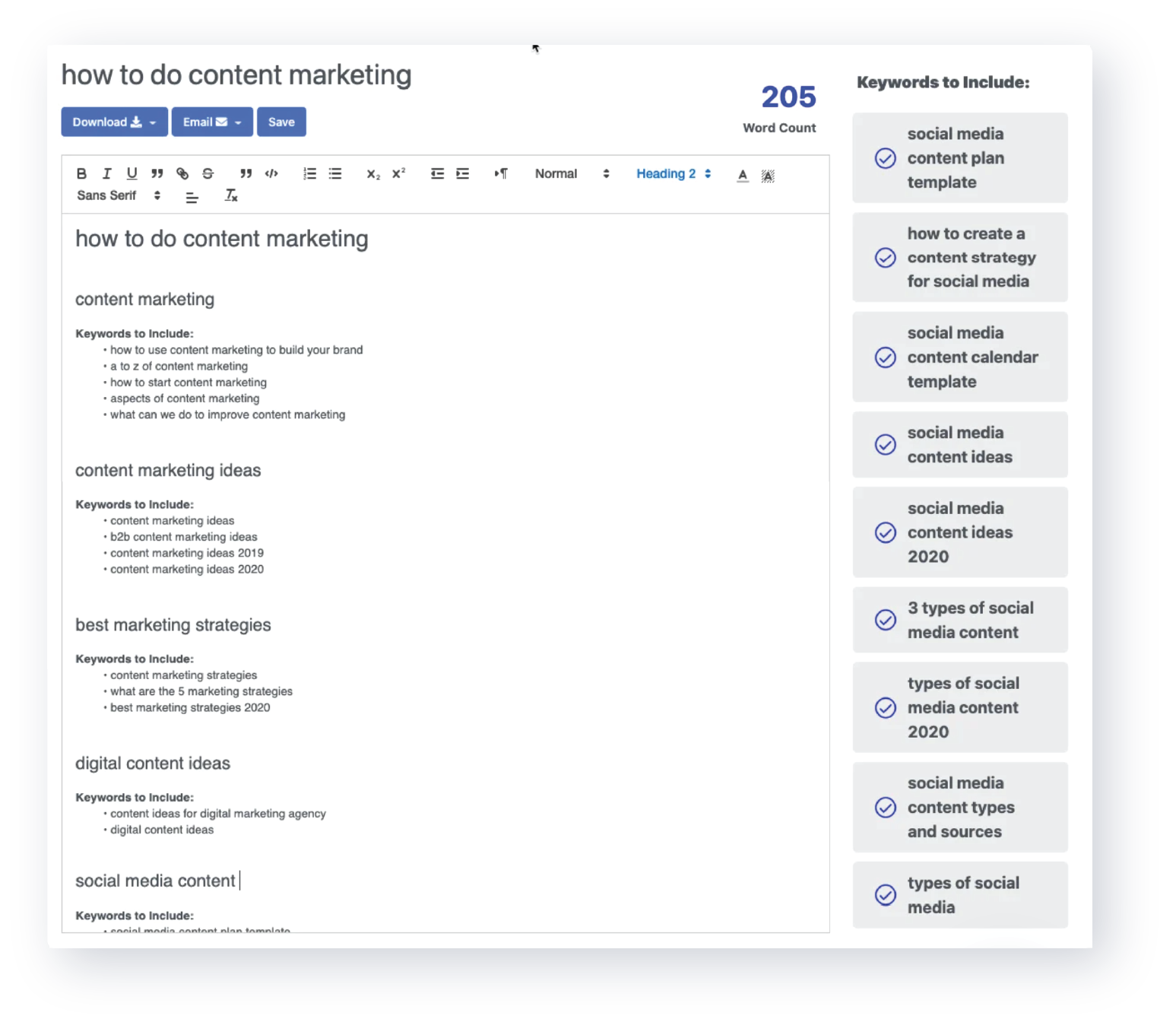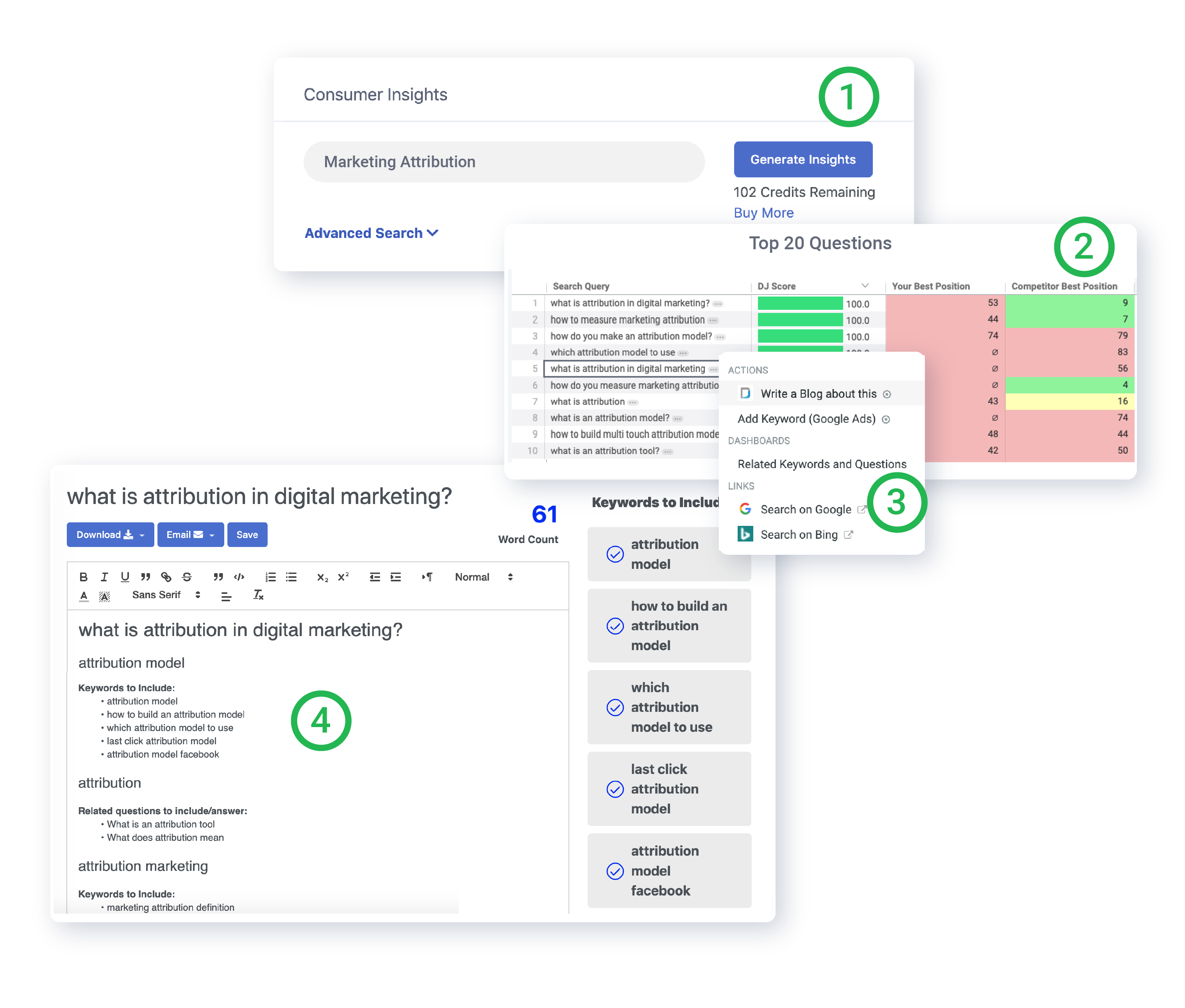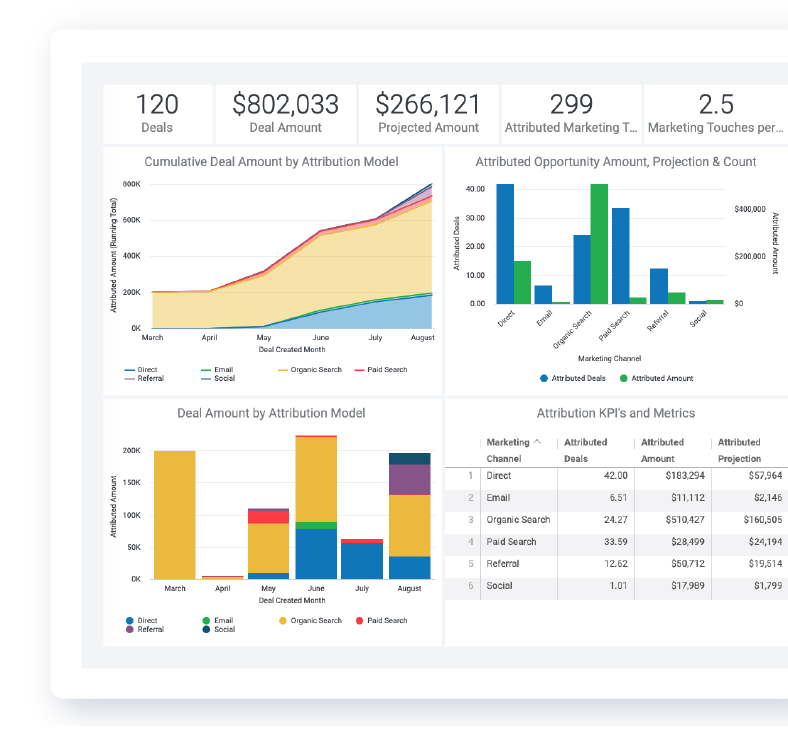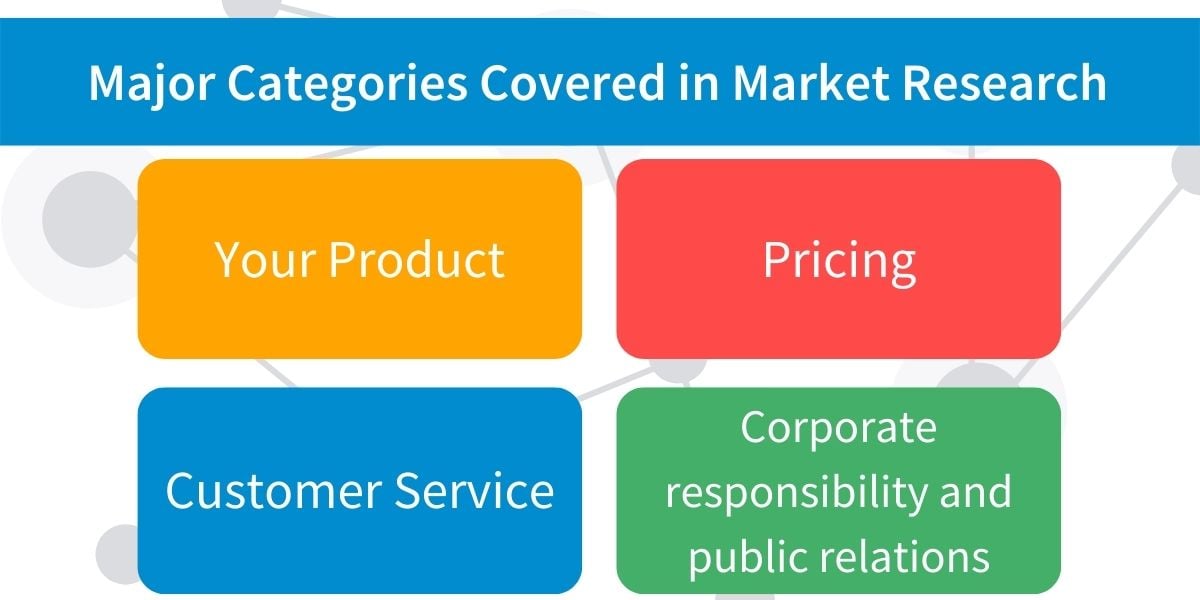See DemandJump in Action
By embracing DemandJump's approach to SEO, we have been able to increase our organic rankings within just 2 weeks of implementing recommendations. This helped us see a 22% increase in organic search month-over-month.
Robert Jacko Vice President Digital Marketing @ Homage
DemandJump has become a crucial extension of our marketing team, providing game changing insights to fuel and propel all aspects of our digital marketing efforts. The DemandJump platform is a must have, we are seriously impressed.
Tim Lavinder Director of Ecommerce @ Hotsox
We used to spend hours looking for insights in dozens of tools and reports. Now we log into one place to find out what customers are doing and how to meet them where it matters most.
Zach Roop Digital Marketing Manager @ Dometic
We use DemandJump recommendations as our digital to-do list. We love going in and seeing the recommendations and knowing what to do next.
JoLynda Wilson Marketing Director @ IWC
Trusted by Brands Around the World
DemandJump Product Suite
Eliminate wasted time and spend. With DemandJump's content, insights, and attribution
you will know with certainty how to win by aligning your marketing to actual consumer behavior.
Content
DemandJump assembles the world’s data, creates networks of customer touchpoints around any topic or keyword, and tells you exactly what content to write, keywords to include, videos to produce, and much more.

Insights
Find out what your target audience cares about for any category, product, or topic, with the click of a button. Gain market share by aligning your marketing efforts to actual customer behavior.

Attribution
Eliminate wasted time and spend. With DemandJump's automated account-based attribution solution you will know with certainty which efforts are driving ROI.

See a Demo of DemandJump
Market intelligence and market research are both integral parts of developing a solid marketing strategy. Neither is expendable, but they are not the same thing, either. As with many terms in marketing, people have come to use them interchangeably. What happens most often is that someone will mistakenly use one term when they're referring to the other activity. Perhaps the concepts are more important than phrasing. The terms are similar but the way you go about compiling the research and the data that's useful for each activity are separate and serve different purposes.
Market research deals specifically with your company, marketing strategy, and product line. Market intelligence is information about the market itself, not your specific positioning necessarily. These are separate things, though a thorough marketer will use both market research and intelligence when developing strategy, assessing current campaigns, and making suggestions for possible products and services that can be added to the line.

Market research is heavily relied upon when the marketing strategy is being assessed and developed. It's also an integral part of product development and will often be at the center of decisions made on branding. For companies that are just being formed, market research should be a large part of the due diligence in planning for developing products and services.
Market intelligence is a wider knowledge of the market itself. This includes knowledge of the competition and the target audience. Market intelligence helps to form the marketing strategy and is integral to developing your marketing position. You can't know where your brand stands in the market without first understanding the market itself and where your competition is positioned. Developing the marketing position informs the type of services that you offer and the target audiences you should cater to. It answers the question, "Why is my company/product the best choice for this consumer?"
Market intelligence is wider in scope and gives you a view of current trends and opportunities. A flexible company might be able to use market intelligence to add new offerings that meet growing needs. You can easily see why these, along with many other marketing terms, are used together. The processes are different but both market research and market intelligence are essential in creating marketing strategy.
The Relationship Between Research and Data Analytics
Marketing research vs marketing analytics: what are the differences? Marketing research often includes data analytics, but it also includes something a bit more. For small to medium-sized companies, data analytics are important but may not reap exact results on a consistent basis simply because there can be a massive amount of data that's not being considered. There is a wealth of data at your fingertips and a plethora of tools to help you analyze it. For smaller companies, marketing research can help fill these gaps with knowledge.
Marketing research might include experimentation. Take a campaign as an example. You create the campaign in order to drive traffic to your landing page with the intention of conversion. Using your analytics, you see that you're driving more traffic from one social media account than you are from another. Is the messaging the same or perhaps the demographic is different on these two platforms? To add to that, the analytics tell you that the conversion rate is higher from the social media account that's driving less traffic. There are some possible explanations for this and the analytics can help you but it won't provide a finite answer.
Marketing research is the course you would take to help answer these questions that the analytics can only help you guess at. You might use a survey or a follow up with customers to help answer those questions. You might experiment with the landing page or messaging. You might also include market research in your data set, which is slightly different from marketing research. Your marketing research is devoted strictly to your current marketing strategy and the how's and the why's of whether it's reaping results. Market research, on the other hand, will give you information on the market as a whole which can offer insights as to why certain campaigns may perform at different levels.
The data analytics you use in these scenarios will often include your web analytics, any analytics from social media accounts, and your internal CRM. On a wider scale, these tools can help you determine whether your campaigns are working, but they can also be used to investigate specific data sets for campaigns or purposes.
You use your data analytics to help inform your marketing research. Because you can collect a wealth of information through your various analytics, in some cases it forms the bulk of your marketing research information. But it is not the complete picture. Your data analytics can only give you information about your web properties, company, brand, and product. Without including research on the market, your competitors, and your target audience, the pictures isn’t full. It is a fantastic starting point, though, and the information found in your data analytics will certainly inform various parts of your marketing and product development initiatives to a high level.
The Importance of Market Research
The role of marketing research is multifaceted and depends largely on where your company is in the cycle. For a new company that's just developing their first product line, the marketing research will lean heavily on the market itself as they develop their marketing position and branding. Marketing research is solely for the purpose of developing your own marketing and deals with the company's products, service, and branding specifically. Once you've built your product and have been delivering to a set market, your marketing research informs the way that you build your marketing strategy.
Types of Market Research
Market research differs - market research meaning the whole market. You do need to understand the market that you're in and the current trends. Market research also includes information about your competitors, demographics, and other offerings in your marketing space. These two types of research intersect quite a bit, especially when you build an initial offering. You'll also want to keep up to date with the market so that you can detect upcoming changes, find new opportunities, and continue to build your brand.
Marketing research is often broken into four categories. Those categories are product, placement, promotion, and pricing. The concept is fairly simple. if you develop the right product and put it in front of the right people at the best price, you'll reap success. Of course, that's much easier said than done. With the advent of digital marketing and the availability of a wealth of more information about customers and the market itself, we can tailor this even further so that each customer has a personalized experience.
Market research deals primarily with place, or the market itself. Depending on your market, this might be location specific or industry specific. To find your perfect marketing position, you need to fully understand the market itself and where your competitors are in the market. Then you need to figure out what your benefit is. What does your product or company do better than all of the competition? Who in your demographic audience will respond to this benefit most favorably?
Your marketing position might be something completely innovative. Maybe you offer a product that no one else offers. It also might be something deceptively simple, such as your price point. Take Walmart, for example. Their main marketing position is their price point. They offer people the things they need at a lower price to improve the quality of life.
The marketing position might be something as unique as an offering that's different from everything else in the market. It might be something simple, like a convenience that other companies don't offer. It may also be a high quality product or exceptionally good service.
Your market and marketing research don't end once you develop your product and identify your position. To continue to grow in your space, you'll need to update your research on your individual marketing endeavors, engagement and reach, as well as any changes in the market itself.
Market Research Methods and Examples
Market research is an important part of the process in building a business. How do you find market research data?
There is no shortage of places to mine for information. Market research examples include both primary and secondary sources of information. Primary data is secured directly from your own customers. Secondary data is usually publicly available or purchased through third parties. Both of these sources bring a wealth of information that relevant to you specific offerings and place in the market.
Let's start with the primary sources. Some market research examples of these include:
- Focus Groups. A focus group brings together a group of people who are in your set demographic. They might be current customers or paid volunteers who sample your product for the purpose of the focus group. As the name would suggest, there is a primary focus for these activities. It might be to get feedback on your packaging or website design. It could be to have people test the product itself. The questions and discussion points are outlined in advance and each member of the focus group gives feedback that you can then dissect to find patterns and answer questions specific to your product or business.
- Surveys. Surveys or questionnaires can deliver excellent information about any aspect of your products or company. You can send them via email or offer opt in pages on your website. They can also be mailed or promoted through various channels. Some companies will offer an incentive for customers to complete surveys, which can help in gathering information. The surveys should be short enough so that they're easy to complete but still answer pertinent questions to allow actionable insights.
- Interviews. Interviews can include phone conversations with customers or clients and in person meetings.
- Testimonials/Reviews. Online reviews should be cultivated and because they're often unasked for, they result in very honest feedback for the most part which is an excellent way to improve pain points and to see where your company excels. Testimonials from clients can also be a wealth of good information.
You'll notice that the primary sources all eliminate any boundary between the consumer and the information. All of these sources give you direct market research about you specific company and products. Secondary sources might include published statistics and information about your competition and market.
When you start compiling your data, you want the fullest picture possible to provide the most accurate insights to your company. Relying strictly on your web analytics won't tell you anything about the market. Relying only on the market data won't tell you anything about your performance and engagement. You need to include as much of the different types of data sets as possible in your analysis in order to build the fullest picture of your marketing position, strengths, and to inform your marketing strategy.
You'll notice patterns emerge as you analyze the data. When you see places where the same notes are often repeated, those are usually the most accurate data points or ones that resonate with the highest percentage of your audience. If you want to test these this type of information, take some popular comment or response and ask about it directly in a survey. For instance, if you see that ease of use is often mentioned in product reviews, ask about it in a quantifiable question in a survey. A very high percentage of affirmative answers will tell you that this is a sales point you can market.
Scope of Market Research
The scope of your market research refers to the entirety of your analytics, analysis, and insights. There are many traditional and innovative ways to conduct your market research and they'll only expand with new tools, analytics, and access to ever more information. There are basic areas where you research or portions of your research might concentrate.
Here are some of the major categories which will be covered in the scope of your market research:

- Your product. Research on your own product will include a competitive analysis of other products on the market to identify your product's strengths and weaknesses as well as its place in the market. This area of your research includes the customer's needs, their response to your products, and research on new products that your customer base wants that can be developed.
- Pricing. Pricing will include the financial implications of production, as well as comparisons with other solutions on the market. Your pricing may be higher but that may be acceptable if the quality of the product is superior. To contrast, a lower priced product may be less durable due to price costs. Both of these scenarios would factor into the way that you choose to market the product and the ideal audience. Another thing to keep in mind here is the cost of production. Marketing can't change pricing without due diligence on the profit margin which is often decided outside of the marketing research. Recommendations on pricing or competitive analysis of pricing can be offered to finance to review if applicable.
- Service. Market research in this area will include internal customer service data and information on service preferences in the industry.
- Corporate responsibility and public relations. Your market research should include information on public relations and ways that your company can get involved in local and national charitable events or ways to give back to the community. For smaller companies, this might include sponsoring local sports or civic organizations. For larger entities, it might include scholarships or charitable gives that support the company's mission or which are chosen by the company. Many organizations support charities that they have a personal relationship with. For instance, a company who has employees that served in the military might support programs for veterans.
The scope of your research can be wide and include a number of different avenues to collect data. A lot of the information you'll find will be in your own analytics, so it helps to know how to do market research online.
Your market research online will include pulling information to help inform your own content. Some of the research you’ll be conducting will include keyword research. SEO keywords need to be used in order to get your site to rank for search terms but the research is also integral to show you what phrases are used often and which rank for your competition.
Another aspect to your market research online will deal with finding current trends and social mentions. You should have your finger on the pulse of when your brand or company is mentioned online so that you can note it, include it in your analytics, and respond.
You can include surveys on your own website properties to gather data that you can develop into reports. This information can be used in a variety of ways, from understanding how well you serve the current customer base to finding information about new products that your loyal customers are clamoring for.
You can also find some fantastic resources online to give you insights into the market itself. Sites such as Pew Research and the US Census can provide invaluable information about every demographic and customer type so that you can fully form your strategy to tap the market.
Market Intelligence
Market intelligence is the ability to take all of the information from the entire scope of your market research and put it together to form insights that allow you a better understanding of the market itself. This type of higher analytical insight can help companies develop their marketing strategy and find new opportunities to expand their reach or product lines.
Marketing intelligence includes customer monitoring, internal analytics, and external data. This is why it’s so important to use the best software and solutions to help you make sense of the information. It can be a lot of data from many different contact points, both external and internal. In order to gain a full picture that will allow you to make reasoned business decisions, you need a way to analyze the information together and in different reporting sets. This is where a marketing intelligence system comes in.
The components of marketing intelligence system need to include tools to analyze and make use of the data in an advantageous way. This might include automating processes that would be too time consuming to do by hand. It also includes robust reporting options and the ability to access various data sets together and separately in order to develop better insights.
Your marketing intelligence uses all of the market research, customer information, competition information, and the entire scope of your data. Insights can come from any number of contact points and often include data gathered from several different sources.
Forming a fuller picture of your customer and your products means that you’ll have a more advanced ability to craft unique content that gives your audience value. There are many ways to use your market intelligence to serve your brand. This might include better efficiency in reaching out to past customers or better leads for cold contacts.
Your strategy should be well thought out but flexible enough to allow for changes in the market. A great marketing strategy should allow you to develop content and offerings that meet current trends. Ideally, you’ll be immersed enough in the current market insights that you can proactively prepare for upcoming events, when possible.
Your market intelligence should include competitive analysis. This data will help you to compare your strengths and weaknesses against direct competition. You should also include indirect competition in this intelligence because it can offer new possible markets. By understanding the competition, how they market their company, what keywords they’re using, what type of advertising they see results with, and their share of the market, you can identify new ways to position your own company and to grow your market share.
Market reports are used in your marketing intelligence to help inform what the whole market in your space is doing. Are there projections for growth? What market share do you currently hold? Is the market shrinking or expanding? Is there room to move your products to a new market? No business operates on an island. It’s important that you have a firm view on the entire market to understand the challenges you face in attracting and audience and maintaining their attention.
Internal customer data is one of the most coveted types of data that you’ll cultivate through various channels where your customer has connected with your brand. This is also a wide swath of data that includes basic information, such as name and email address, but can include very detailed information about browsing and shopping habits, age, sex, profession, income, and various lifestyle and spending preferences. Internal data is important because it helps your marketing strategy include personalization that’s only possible when you can build detailed and accurate customer personas.
Using all of the intelligence at your disposal, you can segment your audience to allow you to deliver tailored communication for the right customer at the best time. A large portion of this process can also be automated. For instance, a customer who leaves their shopping cart without finishing the checkout experience can receive a specific follow up email or be targeted for ads on set social media platforms.
Your ability to tailor this type of marketing initiative is crucial because today’s consumer is most interested in convenience and personalization as a rule. They expect ease of use and to be directed to the things they are most interested in seeing without search.
The Difference Between Market Research and Market Intelligence
Both market research and market intelligence are important aspects of marketing strategy. They actually dive much deeper than only marketing. The business plan itself and the vision of the business rely on the validity of your market research and intelligence. These two separate disciplines complement each other and often the information overlaps.
There are many similarities between market research and market intelligence. First, market intelligence strategies are often identical to methods you might use to conduct market research. Much of the information you’ll find will overlap, though your reasoning or the insights that you’re gathering serve different purposes.
Your market research is largely intended to inform the decisions made about your specific products and services. This might include new campaigns, the target market you’re serving, the branding, messaging, and other aspects of your offerings. Market research takes the temperature of your client base to determine areas where improvements can be made. It also highlights areas where the offerings excel so that those benefits can be considered for marketing initiatives.
 Market intelligence is more concerned with the broader implications of the market itself. With market intelligence strategies, your company can assess the way the market is moving, how your company might develop offerings that are well received, and whether there might be room in the market for growth.
Market intelligence is more concerned with the broader implications of the market itself. With market intelligence strategies, your company can assess the way the market is moving, how your company might develop offerings that are well received, and whether there might be room in the market for growth.
 Using both internal and external data sets, it’s possible to form a fuller picture of your company, its strengths, its weaknesses, and its current position in the market. You can also tap into these analytics to understand your customers better. Most importantly market intelligence allows you to set concrete goals.
Using both internal and external data sets, it’s possible to form a fuller picture of your company, its strengths, its weaknesses, and its current position in the market. You can also tap into these analytics to understand your customers better. Most importantly market intelligence allows you to set concrete goals.
Your goals are the key to future growth. Using the analytics that you can access through intelligence gained both internally and externally, you should be able to form a full picture of where the competition is in the market and what their specific benefit is for customers. This information lets you assess whether their customer base might be the same as yours. Sometimes the target audience is significantly different. For instance, if both companies provided pet grooming services but one company was on location and there was a lengthy waiting period and the other company brought a mobile dog grooming station to the client, those would cater to different customer bases. The on location groomer might have a good reputation and loyal customers. The mobile offering would appeal to people who didn’t like leaving their dog somewhere or who didn’t have time to take their pet to a location.
If your company was one of these, you might look for ways to adjust your service to compete with the other or you might look for ways to highlight your differences.
Looking at the business models alone doesn’t tell you what the right decision would be in terms of how you market or whether you add new services. That’s where you market intelligence comes in to offer a fuller picture of the most advantageous decision.
In this example, perhaps your company is the on premise dog groomer. The mobile groomer offers a service that sounds exciting. But your market intelligence tells you that you aren’t losing customers. The question you want to answer now would be whether it was worth it to expand your market to take the mobile customers. You might find that it’s a worthwhile market to cultivate. If your business has a firmer reputation, adding the mobile service might cement you with your competition’s customer base, as well as creating new offerings for your loyal customers.
Further market research might also show that there are extensive costs to adding the service. By weighing all the information, you’d have a clearer picture of whether that investment would be worth the time and further market share. A final analysis might determine that a better course would be to highlight your own business strengths and extend your marketing reach, rather than your offerings.
Market research and intelligence are most certainly used in your marketing initiatives, but that’s only one department where this type of information is necessary. Your grasp on the current market, new trends, and even the historical growth inform every aspect of the business. This information is necessary for business innovation. Any new product line or offering should start with ample research and market intelligence and all investment decisions should be made with these insights in mind.
Resources
Channel Optimization
Consumer Behavior
Consumer Insights
Consumer Insights and Analytics
Competitor Analysis Tools
Content Marketing
Content Strategy
Cross-Channel Analytics
Customer Insight Research Techniques
Customer Journey Map
Market Intelligence
Marketing Analytics Techniques
Market Research
Marketing Attribution
Opportunities of Internet Marketing
Types of Consumer Insights





